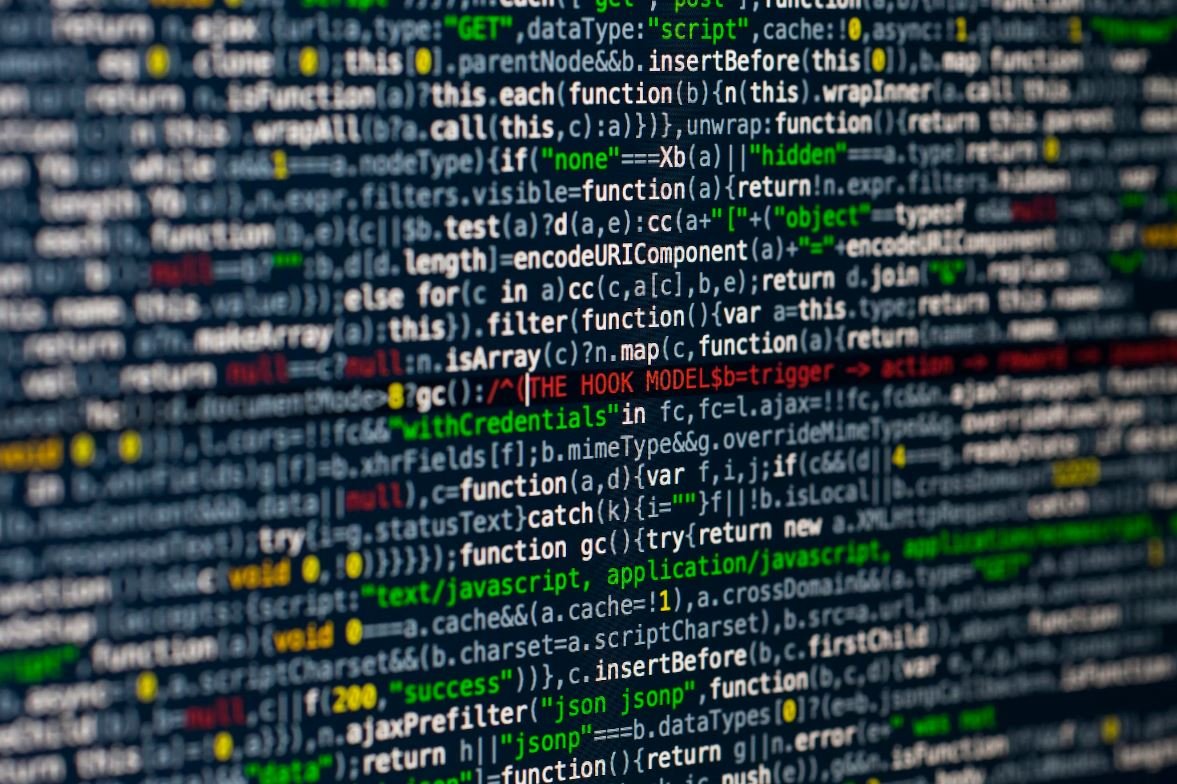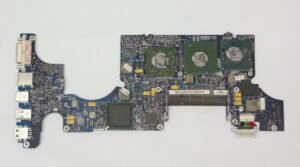In the world of technology, the terms “application” and “software” are often used interchangeably. However, there are slight differences between the two that are worth exploring. Understanding these differences can help you make informed decisions when it comes to choosing the right tools for your needs. In this article, we will compare and contrast applications and software, highlighting their key differences and similarities.
Key Takeaways:
– Applications and software are often used interchangeably, but they have distinct differences.
– Applications are specific tools designed to perform specific tasks, while software is a broader term that encompasses all types of programs.
– Applications are typically designed for end-users, while software can be used by developers to build applications.
Applications: Specific Tools for Specific Tasks
**An application** is a software program that is designed to perform a specific task or set of tasks. This can range from productivity tools like word processors and spreadsheet programs to entertainment apps like video games and photo editing software. Applications are typically **user-friendly** and provide a **graphical user interface** (GUI) that allows users to interact with the program easily.
*An interesting aspect of applications is that they are often platform-specific, meaning they are designed to run on a particular operating system or device. For example, you may find applications that are built for Windows, macOS, iOS, or Android.*
Software: The Broad Term
**Software**, on the other hand, is a broad term that encompasses all types of programs, including applications. While applications are specific tools, software refers to the entire collection of programs, procedures, and data that are used to operate a computer system or perform specific tasks. **Software** can be classified into different categories, such as **operating systems**, **utilities**, **programming languages**, and **middleware**.
*It is interesting to note that software can be used by developers to build applications. They utilize various programming languages and frameworks to create tailored solutions for specific needs.*
Comparing Applications and Software
To further understand the differences between applications and software, let’s compare them in a table:
Table 1: Comparison between Applications and Software
| | Applications | Software |
|—————-|—————————————|—————————————|
| Definition | Software programs designed for specific tasks | Broad term encompassing various programs |
| User Interface | Graphical user interface (GUI) | Varies based on the type of software |
| Platform | Platform-specific (e.g., Windows, macOS) | Can be platform-specific or platform-agnostic |
As seen in the table, applications have a focused purpose and generally provide a user-friendly interface, while software is a more general term that encompasses a wide range of programs with varying interfaces and platform compatibility.
Differentiating Applications and Software
It can sometimes be challenging to differentiate between applications and software, especially when the lines can blur. To further clarify these differences, let’s look at another table:
Table 2: Differentiating Applications and Software
| | Applications | Software |
|————-|———————————————|——————————————–|
| Examples | Microsoft Word, Photoshop, Angry Birds | Operating systems, programming languages |
| Usage | End-users | Developers |
| Scope | Specific tasks | Computer system and various functionalities |
This table highlights the main differences between applications and software in terms of their examples, usage, and scope.
Choosing the Right Tools for Your Needs
Now that we have explored the differences between applications and software, it becomes essential to choose the right tools for your needs. Here are some factors to consider:
1. Determine the specific task or tasks you need to accomplish. If you require a tool for a particular purpose, look for a specialized application that is tailored to that task.
2. Consider the platform or operating system you are using. Ensure that the application or software you choose is compatible with your device.
3. Evaluate the user interface and ease of use. Look for applications or software with intuitive interfaces that allow for seamless interaction.
In conclusion, understanding the differences between applications and software is crucial when it comes to making informed decisions in the world of technology. While applications are specific tools designed for end-users, software is a broader term that encompasses all types of programs. By considering factors like task-specific needs, platform compatibility, and user interface, you can choose the right tools for your requirements.

Common Misconceptions
Application vs Software
There is often confusion between the terms “application” and “software,” with many people mistakenly using them interchangeably. However, these two terms have distinct meanings and refer to different things.
- An application is a specific program or set of programs designed to perform a specific function or task.
- Software, on the other hand, refers to a collection of programs, data, and instructions that enable a computer or device to perform various tasks and operations.
- Applications are a type of software, but not all software is an application.
Another misconception is that applications are only found on mobile devices or smartphones. While it’s true that mobile applications are widely popular, applications can also be found on computers, laptops, tablets, and even specialized devices like digital cameras or GPS systems.
- Applications are not limited to mobile devices; they are available on various platforms, including desktops and laptops.
- Software applications can be both offline (installed directly on a device) and online (accessed through a web browser).
- Some common examples of applications include word processors, web browsers, photo editing software, and messaging apps.
Additionally, there is a misconception that all software titles are applications. While many software titles are indeed applications, the term “software” encompasses a broader range of programs and tools.
- Software titles include not only applications but also system software, such as operating systems and device drivers.
- Software can also include programming languages, databases, antivirus programs, and other utility tools.
- While applications are designed to perform specific tasks for end-users, software titles can serve a wide range of purposes, including development, maintenance, security, and system management.
Another common misconception is that you need technical knowledge or programming skills to use applications or software. While certain software titles or complex applications may require some technical proficiency, the majority of applications are designed to be user-friendly and usable by individuals with no programming background.
- Applications are typically designed with a user-friendly interface, making them accessible to a wide range of users, regardless of technical expertise.
- Software titles often come with user guides and tutorials to assist users in learning and utilizing their features effectively.
- The availability of user forums, online help resources, and customer support further enhances the accessibility of applications and software to non-technical users.

The Growth of Mobile Applications
The rapid development of mobile technology has brought about a significant shift in the way applications are developed and used. This table depicts the exponential growth in the number of mobile applications available across different app stores globally.
Global Revenue Comparison: Applications vs Software
Comparing the revenue generated by applications and software provides valuable insights into the market trends. This table showcases the revenue generated by applications and software over the past few years.
Popularity Comparison by Device
Examining the popularity of applications and software on different devices can help us understand consumer preferences. This table illustrates the distribution of application and software usage across various devices.
User Ratings: Applications vs Software
User ratings play a crucial role in determining the success of applications and software. This table presents a comparison of user ratings for different applications and software platforms.
Market Share: Applications vs Software
Understanding the market share of applications and software is essential for businesses. This table displays the market share of various application and software providers.
Cost Comparison: Applications vs Software
Cost is a significant factor to consider when choosing between applications and software. This table highlights the cost comparison between applications and software for different platforms.
Security Features: Applications vs Software
Security is a crucial aspect of both applications and software. This table provides an overview of the security features provided by different applications and software platforms.
Compatibility: Applications vs Software
Compatibility with different devices and operating systems is a key consideration when selecting applications or software. This table showcases the compatibility options offered by various applications and software providers.
User Base Comparison: Applications vs Software
The size of the user base is an indicator of the popularity and reach of applications and software. This table compares the user base of different applications and software platforms.
Ease of Use: Applications vs Software
The user-friendliness of applications and software is crucial for enhancing user experience. This table outlines the ease of use for various applications and software platforms.
In today’s technology-driven world, the debate between applications and software continues to fuel discussions. As depicted in the tables above, the growth of mobile applications has been exponential, with a vast range of revenue generation and popularity across different devices. User ratings and market share showcase the impact of applications and software in the digital market. Additionally, factors such as cost, security features, compatibility, user base, and ease of use influence the choices made by consumers. The decision between applications and software ultimately depends on individual requirements and preferences. As technology continues to advance, it is crucial for businesses and users alike to stay informed and make informed decisions.
Frequently Asked Questions
What is the difference between an application and software?
An application is a type of software that is specifically designed to perform specific tasks or functions. On the other hand, software refers to a collection of programs, procedures, and data that are used to operate a computer system.
Can all software be classified as applications?
No, not all software can be classified as applications. While all applications are software, the term “software” is more broad and includes various types such as system software, programming software, and utility software.
What are some examples of applications?
Examples of applications include word processors, spreadsheet programs, web browsers, email clients, photo editing software, and video editing software.
Is application software always installed on a device?
Not necessarily. While many applications are installed on a device, there are also web applications that can be accessed through a web browser without the need for installation.
Can software be used without an application?
Yes, software can be used without an application. System software, such as operating systems, is essential for running a computer and does not necessarily require a specific application to be used.
Are all applications considered software programs?
Yes, all applications are considered software programs as they are a type of software. However, not all software programs can be classified as applications.
What are the advantages of using applications?
Some advantages of using applications include improved productivity, enhanced functionality, user-friendly interfaces, and the ability to perform specific tasks efficiently.
What are the benefits of using software?
The benefits of using software include automation of tasks, increased efficiency, data processing capabilities, organization of information, and improved accessibility to functions.
Can applications and software be customized or modified?
Yes, both applications and software can be customized or modified based on specific needs or preferences. This can involve changing settings, adding plugins or extensions, or even developing custom software solutions.
How do I choose between an application and software for my needs?
The choice between an application and software depends on your specific requirements. Consider factors such as the intended use, functionality, compatibility, ease of use, and available resources before making a decision.





